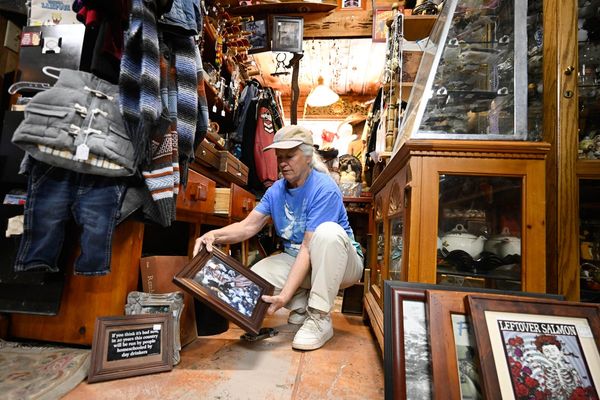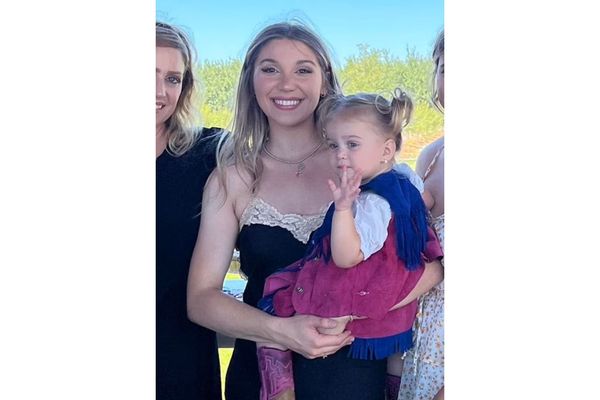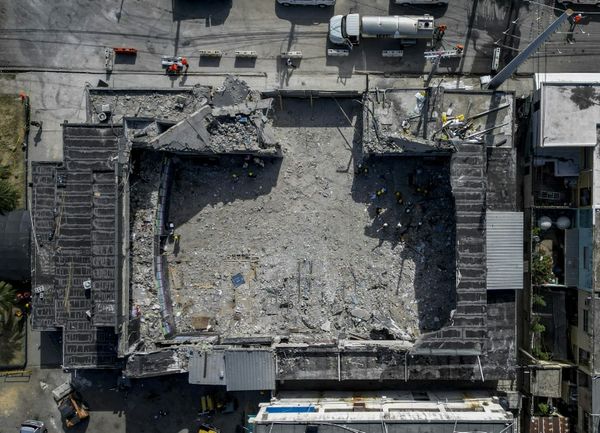One of the televisions in the Dodgers' clubhouse Friday afternoon was tuned to MLB Network when Juan Soto appeared. It was time for another segment to discuss Soto's future.
"Where is he going?" a player asked when he looked up.
It's a fascinating question everyone in the industry began asking on July 16 when the stunning news surfaced: The Washington Nationals were open to trading Soto by the Aug. 2 deadline after he declined their 15-year, $440-million contract extension offer.
But it's not the only mystery surrounding the development. For the Nationals to trade Soto, they'll have to thoroughly evaluate the market for a haul they could justify as adequate to bolster a rebuild. That might be impossible.
Prices for players are subjective, but they are almost always guided by history. There are other examples to study and information to examine. They are the bumpers along the slick lane. Precedent doesn't exist for Soto.
He is arguably the most valuable asset available in a midseason trade in modern Major League Baseball history. The outfielder is already regarded as one of the best hitters — if not the best hitter — in the majors at just 23 years old. The historical comparisons at Soto's age are generational talents. Mike Trout. Frank Robinson. Bryce Harper. Miguel Cabrera. Mickey Mantle. Hank Aaron. He had a .292 batting average with 118 home runs and a .992 on-base-plus-slugging percentage in 557 career games entering Sunday. He dazzled in the Nationals' championship run in 2019 — his first full major-league season — and turned 21 during the World Series.
He is a bilingual superstar oozing charisma and confidence with a smile holding enough wattage to light Dodger Stadium. Multiplying his value, Soto isn't slated for free agency until after the 2024 season. Or — as people in the majors are calculating the time — three pennant races from now.
Los Angeles hosted his latest prime-time exploits. Last Monday, after his cross-country flight touched down at 1:30 a.m., Soto smoothly fielded an hour of questions about his hazy future. Hours later, he won the home run derby. The star shined. It'll return Monday when the Dodgers and Nationals begin a three-game series.
Clubs across the majors, on both coasts, in markets big and small and in between, want him. The San Diego Padres, the St. Louis Cardinals, the Seattle Mariners, the teams in New York, the Dodgers, and more. Where he lands could decide the final team standing in October.
So, what is Soto worth in a trade? The short answer is, probably more than anyone traded in recent memory.
"They basically want your top six prospects," said a major league official who requested anonymity to speak freely on the matter. "That's the ask. You're looking to get a player with two-plus years of control, arguably the best hitter in the game, [but] you basically now have to be willing to retool your entire farm system."
Defining a team's top prospects is an imprecise science. Publications' rankings offer an idea. For the Dodgers, the list could include six of these seven players: catcher Diego Cartaya, right-hander Bobby Miller, infielder Miguel Vargas, second baseman Michael Busch, right-hander Ryan Pepiot, outfielder Andy Pages, and right-hander Gavin Stone.
The price would be reduced if the Nationals insist on attaching a bad contract to Soto the way the Boston Red Sox hitched David Price to Mookie Betts, another superstar outfielder, in their trade with the Dodgers in February 2020. The Nationals' likely candidate in that scenario is Patrick Corbin, a left-hander with a 5.66 ERA over the last three seasons and nearly $60 million left on his deal over the next two years.
Other people around the industry valued Soto slightly differently when asked for this story. One scout predicted a Dodgers package would include Cartaya, Pages, Pepiot, Dustin May, and a "wild-card, high-ceiling" prospect in the low minors. One agent guessed Soto would cost three elite prospects and two major leaguers.
One front-office official from another club said it would take three or four "elite elite" prospects and another young major league player with years of control remaining. A second front-office member said Soto would cost at least two prospects ranked in the top 100 across the minors, if not three, and two other "solid names" that don't have more than one year of major league service time.
A third team official kept it simple.
"A whole lot," he said. "Probably a big league-ready guy and some top prospects."
One club executive said the closest midseason comparison to the Soto sweepstakes in recent history happened in July 2007 when the Texas Rangers traded Mark Teixeira to the Atlanta Braves for five players.
Teixeira was 27 and a free agent after the next season. He had one All-Star appearance, two Silver Slugger awards, two Gold Glove awards, a rookie of the year award, and one top-10 MVP finish on his resume. The Braves were seeking a power-hitting first baseman for a playoff push. Teixiera checked the box, hitting .317 with 17 home runs and a 1.020 on-base-plus-slugging percentage in 54 games down the stretch for Atlanta.
The Braves missed the playoffs anyway. They traded him to the Angels the next summer. None of the five players the Rangers acquired reached Teixeira's level, but three — Elvis Andrus, Neftalí Feliz and Matt Harrison — became All-Stars and helped the Rangers reach the World Series in 2010 and 2011.
A fourth, catcher Jarrod Saltalamacchia, had a 12-year major league career. The fifth, pitcher Beau Jones, was a first-round pick but never reached the majors.
Betts and shortstop Francisco Lindor were stars in their primes recently traded during the offseason, but they each had a season remaining before free agency. One offseason trade featuring a superstar with more than one year of control in the last two decades is comparable: The Florida Marlins' decision to send Cabrera to the Detroit Tigers in December 2007.
Cabrera was traded with starter Dontrelle Willis for six players. He was a 24-year-old, four-time All-Star third baseman with a .313 batting average, .929 OPS, and 138 home runs in five seasons. Adding to his worth, he was two seasons away from reaching free agency.
He then made eight more All-Star teams, won a Triple Crown, reached 3,000 hits and 500 home runs, and led Detroit to a World Series appearance as a first baseman and designated hitter. He has accumulated 50.2 bWAR in 15 seasons with the Tigers, solidifying a future Hall of Fame induction.
The six players the Marlins acquired compiled a 24.2 bWAR after the trade. The best of the group was Andrew Miller, who failed as a starter before becoming an All-Star reliever. They're all out of baseball. Cabrera has one year left on an eight-year, $248-million contract.
"Historically, anyone who trades a Juan Soto usually have to say to themselves: How do I find a replacement for Juan Soto?" said Scott Boras, who represented Teixeira in 2007 and is Soto's agent. "And if that replacement comes in four pods, rather than one, and those pods are at different levels of the game, I wouldn't want to be the one that's the advocate that has to explain the comparability of that.
"Because I think it would be an extremely difficult process, knowing that the person who received Juan is getting immediate benefit of a player that is extraordinary in his prime."
Nationals general manager Mike Rizzo didn't think he would need to provide an explanation as recently as last month. Rizzo said the team wasn't trading Soto in a June 1 radio interview. That changed by mid-July. Soto, incredibly, is available. The list of suitors is long. The cost will be high. How high is the question.









